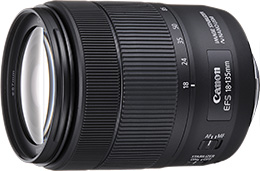Architectural Photography #2: Using Wide-angle/Telephoto Focal Lengths
Buildings make for popular photography subjects, whether they are the ones you come across on walks around the neighbourhood, or the grand historical works of architecture in a foreign land. In this 4-article series, learn more about the different techniques for capturing stunning photos of buildings. Part 2 introduces the use of wide-angle and telephoto lenses. (Photos by: Takeshi Akaogi, Edited by:Etica)

EOS 6D/ EF70-300mm f/4-5.6L IS USM/ FL: 120mm/ Aperture-priority AE (f/4.5, 1/100 sec., EV+2)/ ISO 10000/ WB: Auto
Shooting Conditions: Bright and indoors/ Location: Tokyo Station, Marunouchi, Tokyo
Which kind of lens is suitable for photographing buildings?
To photograph a building in its entirety, you will need a lens with a wide-angle focal length range, whereas to capture details from a distance, you will need a lens with a telephoto focal length range. Hence, a single zoom lens that covers both the wide-angle and telephoto ranges is ideal. In addition to the lens used for the example shots here, we recommend lenses such as the EF-S18-135mm f/3.5-5.6 IS STM for APS-C camera users.
Capture expansive views in the wide-angle range
Generally, angles of view less than 35mm (*35mm film-equivalent) are referred to as "wide angle" and are used for capturing a wide area. This allows you to capture the entire building from a close distance in scenes where you are unable to shoot the building from further away, or when trying to capture the expansive view in a small room.
Learn all about wide-angle lenses and their characteristics in our series on Exploring Wide-Angle Lenses:
Part 1: Photo Effects of Wide Angle Lenses
Part 2: Composition Techniques for Wide-Angle Lenses

Taken at a focal length of 26mm
An open-style ceiling. I used the wide angle of view to fit the whole structure into the screen.
EOS 6D/ EF24-70mm f/4L IS USM/ FL: 26mm/ Aperture-priority AE (f/5.6, 1/50 sec., EV+2.3)/ ISO 200/ WB: Auto
Shooting Conditions: Bright and indoors/ Location: Tokyo International Forum, Marunouchi, Tokyo
Use the telephoto range to close in on details
Generally, angles of view larger than 85mm (*35mm film-equivalent) are referred to as "telephoto", which allow you to make a distant subject appear closer than they actually are when shooting in the telephoto range. This is useful when wanting to focus on the details of a subject that is far away.
Before

Taken at a focal length of 24mm
A classic reception room. I used an angle of view in the wide angle range to capture the entire room.
EOS 6D/ EF24-70mm f/4L IS USM/ FL: 24mm/ Aperture-priority AE (f/4.0, 1/40 sec., EV+1.3)/ ISO 800/ WB: Auto
Shooting Conditions: Dark and indoors/ Location: Meiji Yasuda Seimei Building, Marunouchi, Tokyo
After

Taken at a focal length of 300mm
A beautiful lamp shade with an elaborate design. Shooting in the telephoto range allows you to almost feel the texture of the lamp shade.
EOS 6D/ EF70-300mm f/4-5.6L IS USM/ FL: 300mm/ Aperture-priority AE (f/5.6, 1/320 sec., EV+1.3)/ ISO 3200/ WB: Auto
Shooting Conditions: Dark and indoors/ Location: Meiji Yasuda Seimei Building, Marunouchi, Tokyo
When shooting exteriors, avoid using a lens in the wide-angle range where possible
Because a wide-angle lens uses an angle of view that emphasizes the sense of distance, a building shot in wide angle will appear greatly distorted. To avoid distorting your subject, i.e. the building, it is best to stand as far away from the building as possible, and to use an angle of view that is closer to standard (i.e., closer to that of the human eye) rather than wide-angle. Moreover, taking shots of a building from the left or right side will accentuate the degree of distortion. Hence, try finding a spot where you can face the centre of the building head-on.
Before

The exterior taken up close
The distortion is greater here because I took the shot of the building at a close shooting distance.
EOS M/ EF-M11-22mm f/4-5.6 IS STM/ FL: 17.6mm (*35mm film-equivalent)/ Aperture-priority AE (f/11.0, 1/200 sec., EV±0)/ ISO 100/ WB: Auto
Shooting Conditions: Bright and sunny/ Location: Tokyo Station (Marunouchi Exit), Marunouchi, Tokyo
After

The exterior from a distance
The brick station building at Tokyo Station. By taking the shot from a distance, I was able to capture the building in its entirety with minimal distortion.
EOS M/ EF-M18-55mm f/3.5-5.6 IS STM/ FL: 28.8mm (*35mm film-equivalent)/ Aperture-priority AE (f/8.0, 1/200 sec., EV±0)/ ISO 100/ WB: Auto
Shooting Conditions: Bright and sunny/ Location: Tokyo Station (Marunouchi Exit), Marunouchi, Tokyo
For more tips on composing shots with wide angle, telephoto and standard lens, check out:
Professionals Composition Techniques – Making Good Use of Lenses
Receive the latest updates on photography news, tips and tricks by signing up with us!

EOS 6D (Body)

EF70-300mm f/4-5.6L IS USM

EF24-70mm f/4L IS USM

EF-M11-22mm f/4-5.6 IS STM

EF-M18-55mm f/3.5-5.6 IS STM

EF-S18-135mm f/3.5-5.6 IS STM

As a photographer, Akaogi works mainly for magazines and writes books introducing photography and practical tips. He also teaches at photography workshops.
The team behind Japanese camera magazine,“Camera Biyori” as well as numerous other books. Also organizes events and runs the "Tanoshii Camera School", a photography school.

































